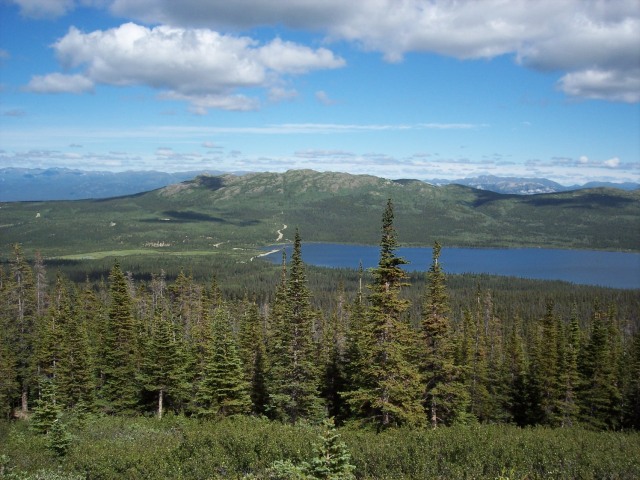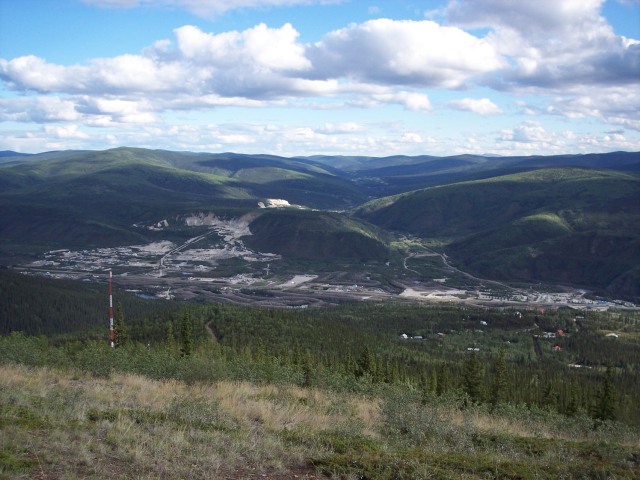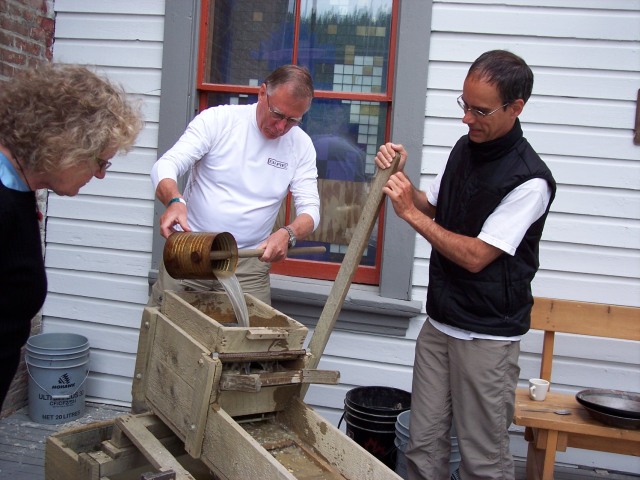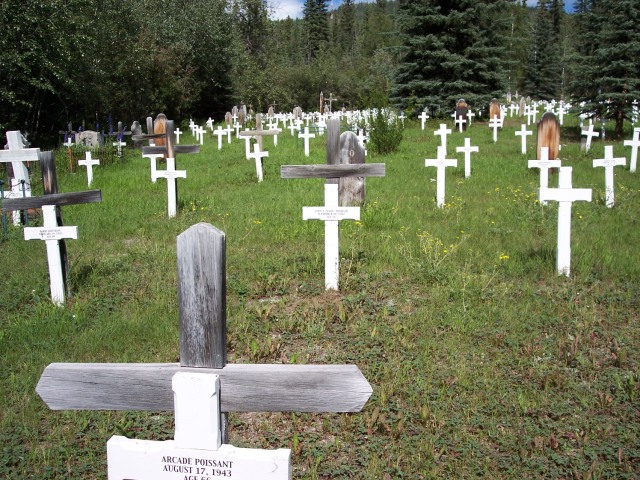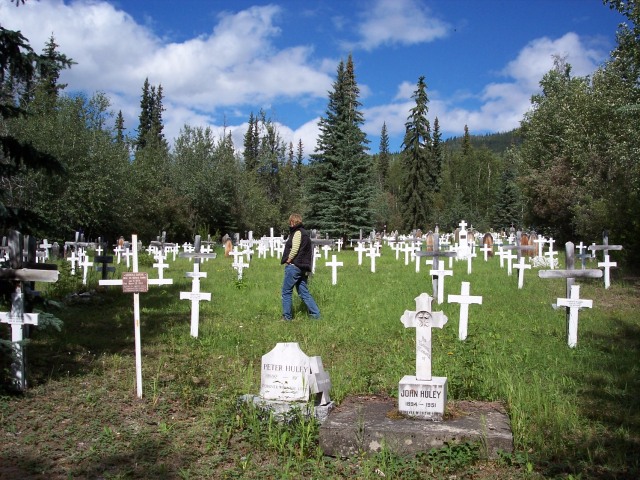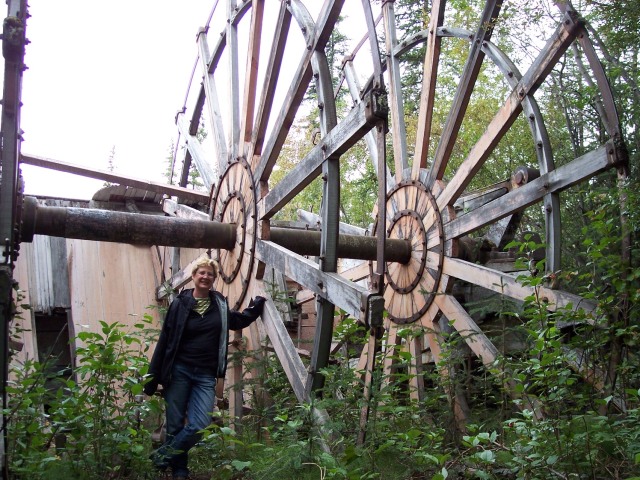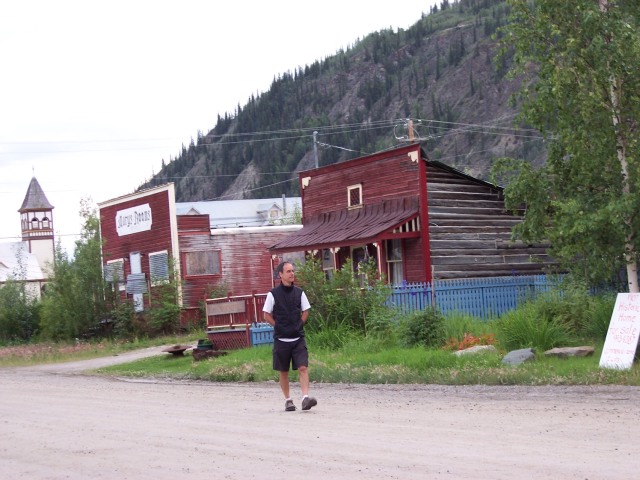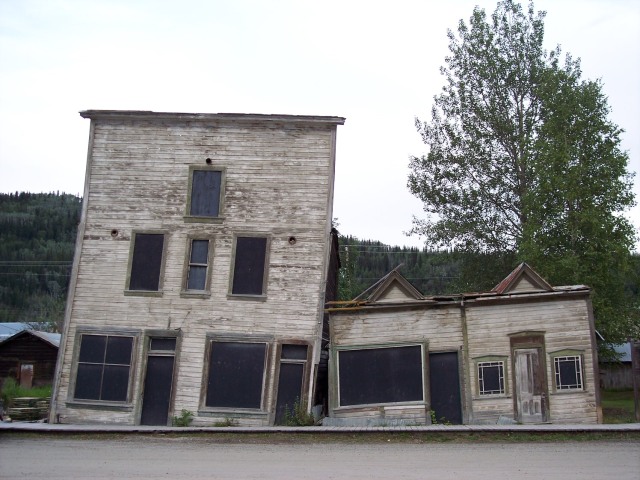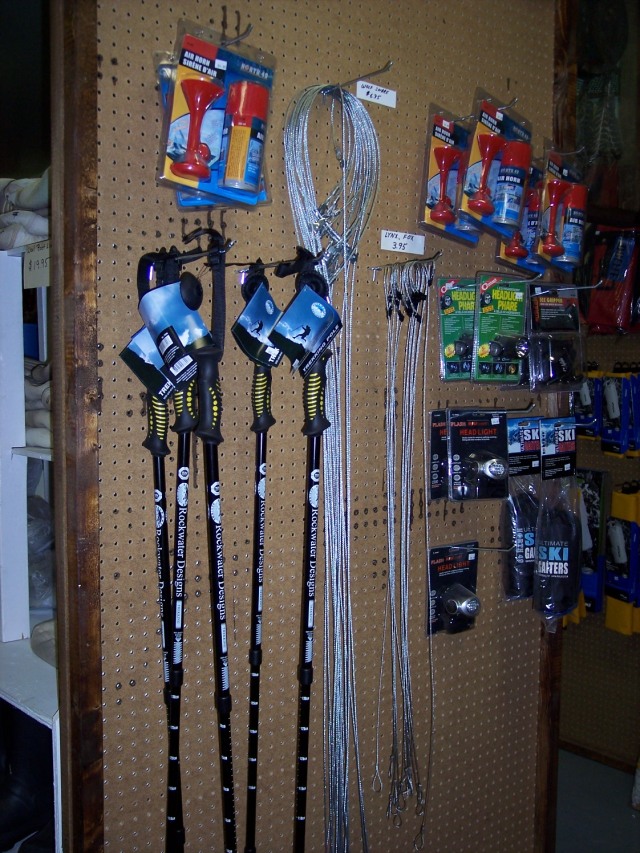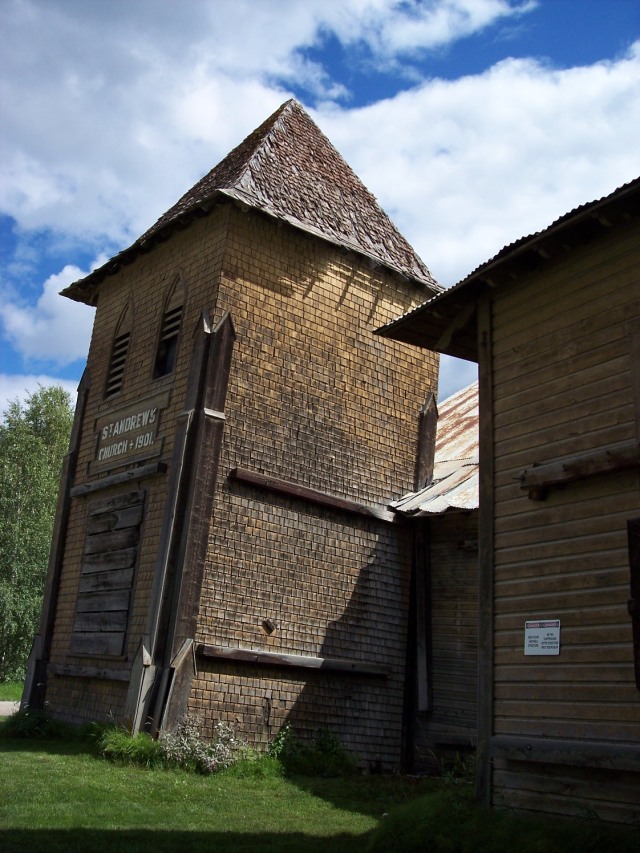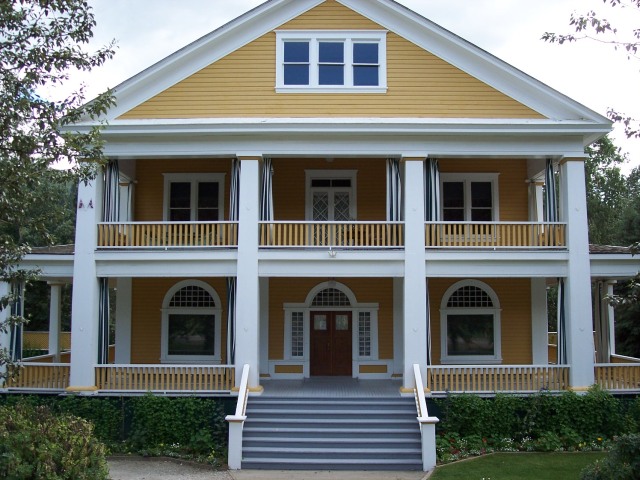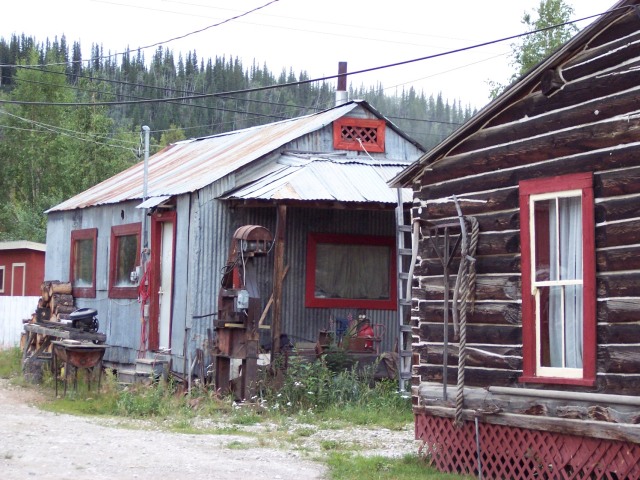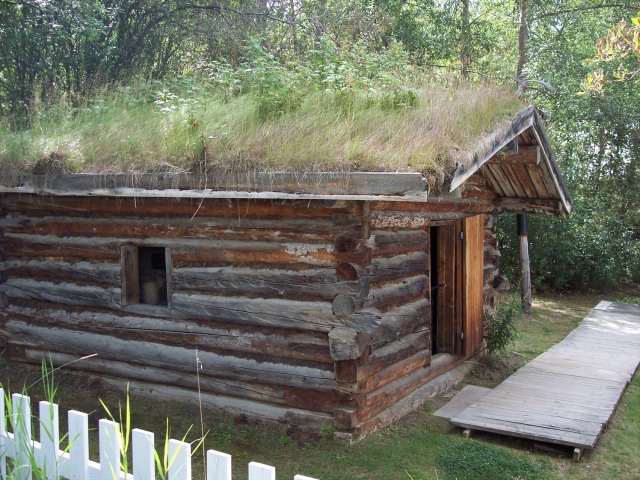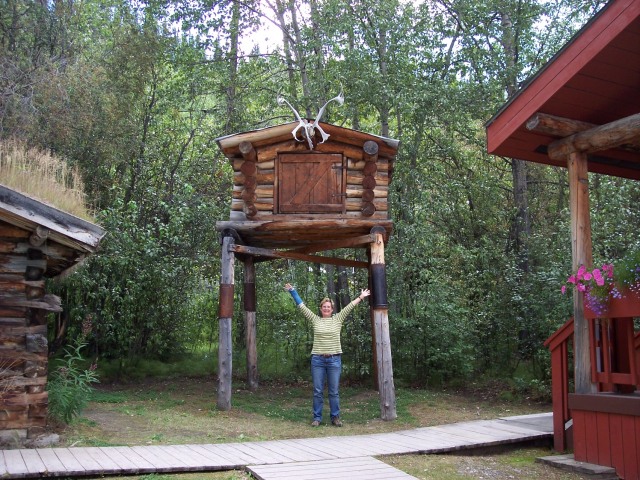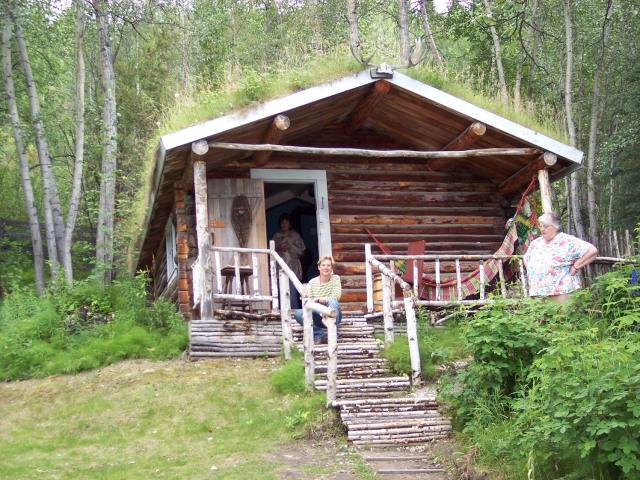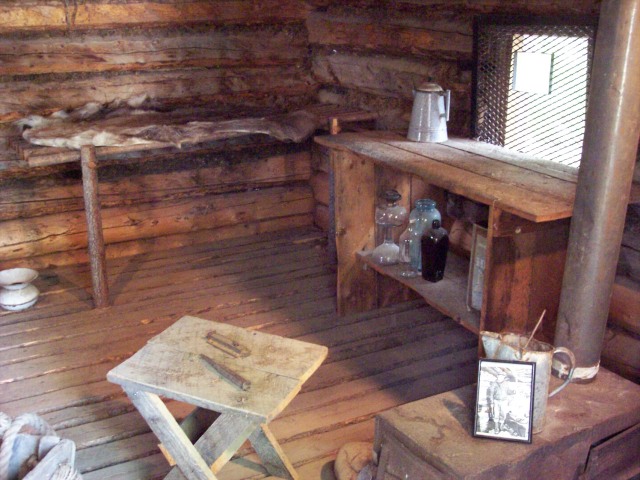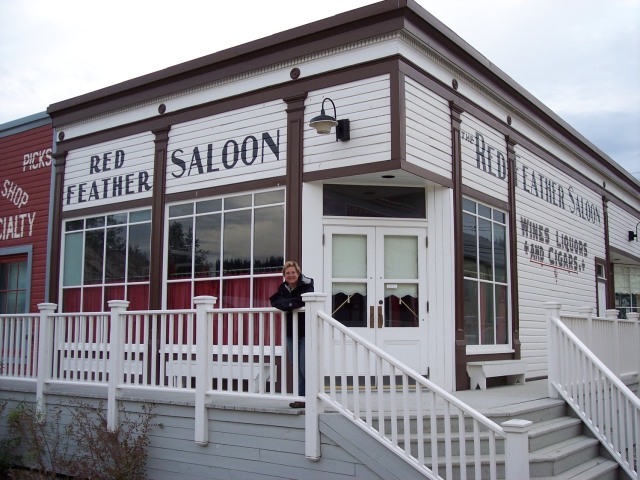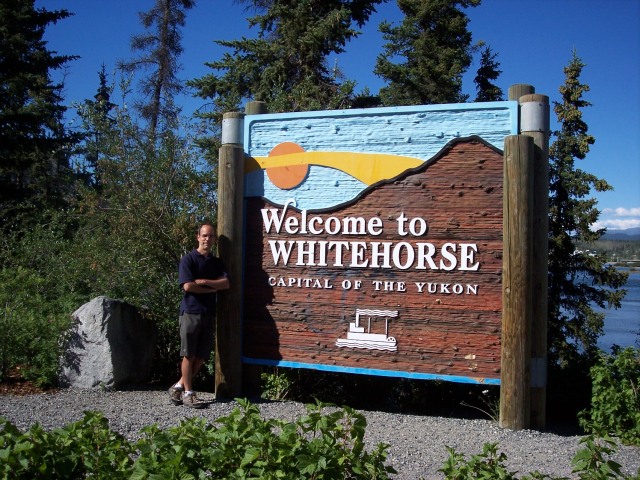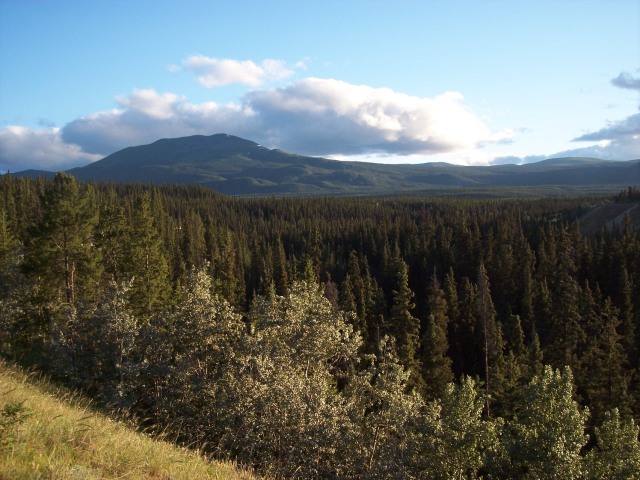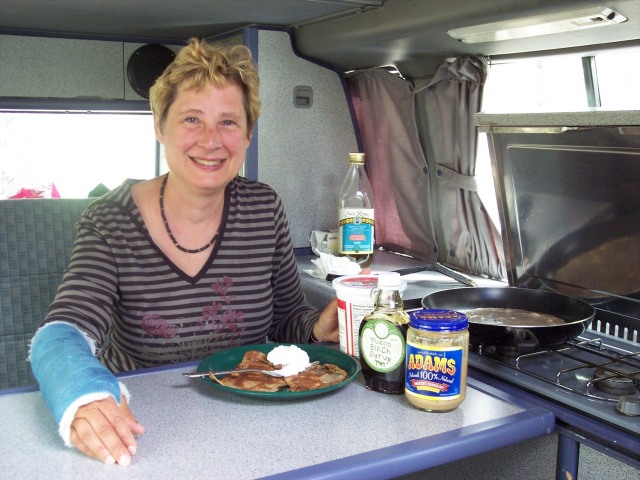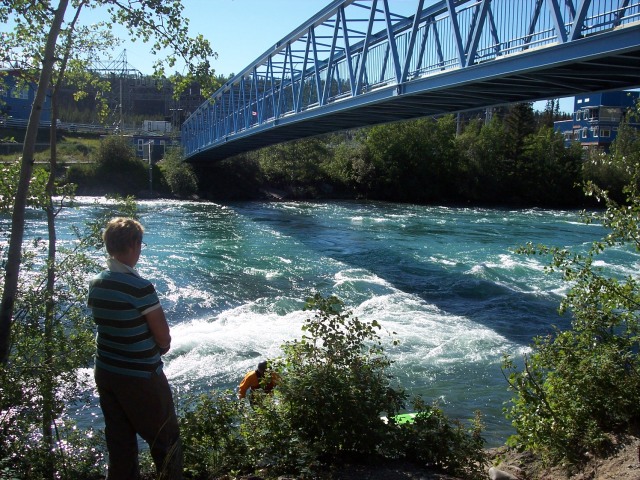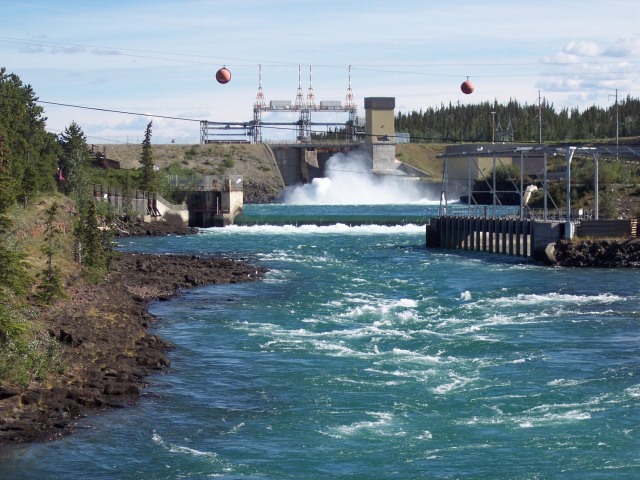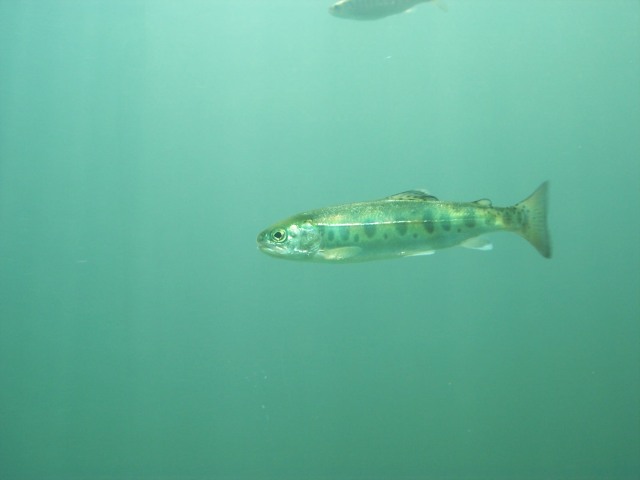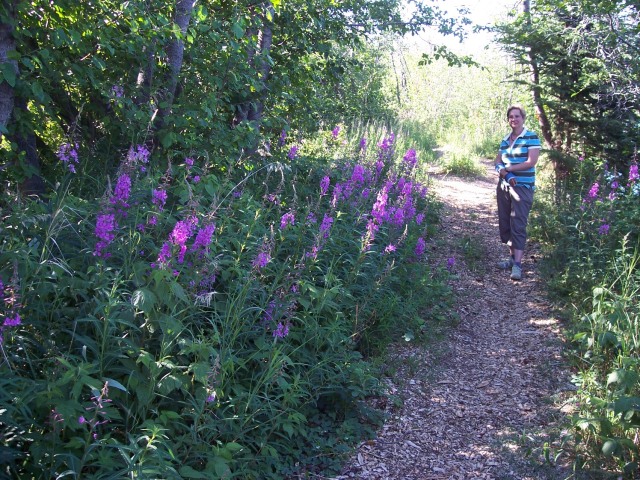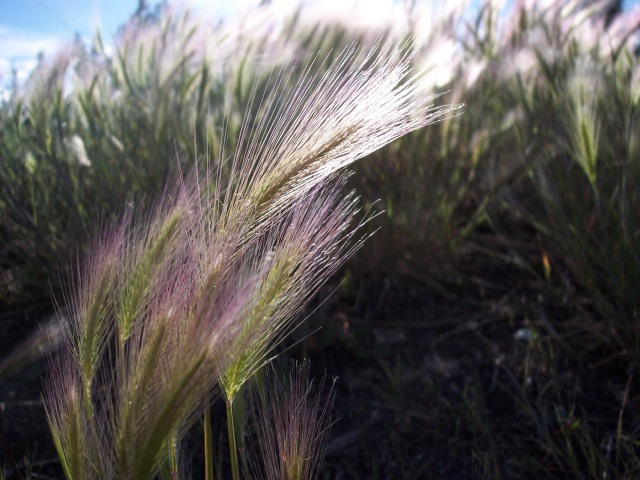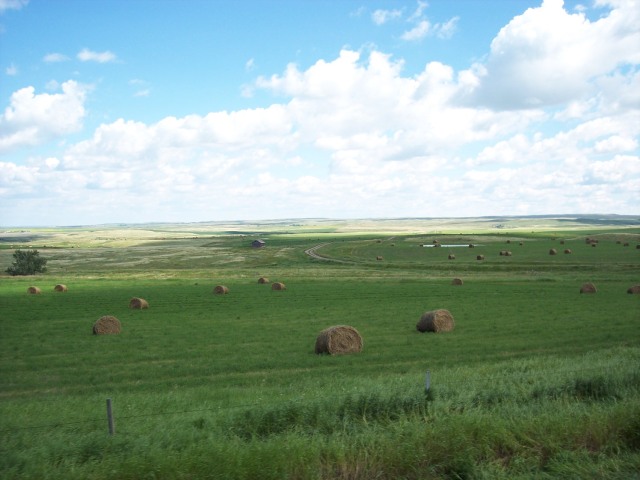Our Blog is about seven countries behind our actual travels. But I felt like putting in a current post. Michel & I have been looking at South America as potential expat investors. There are several obvious advantages to Canada. One being that your investment dollar goes further!
Another being that we are members of an investment group which has asked us to provide them our feedback. So we are posting it here.
You asked me for my assessment of Chile vs. Argentina for investment purposes. Here is my opinion. Keep in mind that this opinion is solely based on my observations as a tourist who doesn’t speak any Spanish. Additionally, I was part of a backpacking tour group nearly the entire time that I was in these two countries.
I am aware that Douglas Casey , (a free market economist/investor whom we follow) is busy touting Argentina as the place to invest. And I think his opinion is valid – for those who are ultra rich or at least have a very high net worth. For people of more modest means – those that I would classify as middle class or less, I would say that Chile would be the superior place to start a business.
Chile has less graft and better infrastructure. The border crossings were extremely efficient. The police check-points were not entitled to root through your belongings and throw your stuff on the ground. Nor did they walk around with paper cups and demand tips for doing it. They used scanners and sniffer dogs to look for contraband.
You can obviously export meat at a profit. I saw stunning sheep and cattle herds numbering in the hundreds of thousands of animals – and acres of vineyards – with wine for export. The population is very cosmopolitan. From what I could tell it was extremely easy to get work and get into Chile as an expat and start a business.
In Argentina, it also appears to be fairly easy to get into the country and get work. And their population is also cosmopolitan. However the infrastructure is not as well developed, and in
many cases they are riding on previous infrastructure investment – but it is decaying and needs updating.
At a contractual level, Chileans seem to put more effort into honoring the four corners of an agreement. In Argentina, it seems relatively common to mostly meet the agreed contract. If a reasonable attempt is made to fulfill a contract, but they can’t meet it fully; oh well. They don’t mind skipping the details. They also seem more willing to engage in ‘puffery’ when describing the contents of a contract which can convey raised expectations – especially to a foreigner who expects the descriptions to be fulfilled.
Both countries seem to have a problem with inefficient, slow service levels (as compared to international standards). When I timed various things – it seemed to take between 30% and 100% longer to deliver an identical service as compared to Canada where I reside.
For instance to get my hair cut & dyed in Canada – it takes about an hour. In Chile – it took 2.5 hours. It takes roughly 2 times longer to complete a restaurant meal. They take much longer to recognize your arrival, deliver a menu, take your order and then give you the bill -even if you are the only customer. Observationally in the kitchen, the work flow is very poorly laid out so that various staff movements criss-cross and impede efficient food production. (I have worked extensively in food production).
Stores in general have excessive staffing levels. Often the staff are not deployed efficiently. And staff, both in stores and on construction sites often elect to complete their tasks in an inefficient manner. They have convoluted theft control methods that need modernizing. These are weaknesses that an expat could exploit.
In both countries, I noticed that for some reason, businesses often don’t properly maintain their business equipment. It isn’t just tourist rental equipment that appeared under-repaired. I noticed buses driven in a dangerous manner (it is acceptable to drive them drunk) as well as poorly repaired. But these problems were worse in Argentina.
I am not sure why basic equipment maintenance appears to be ignored. As poor equipment affects productivity and reputation – information which can be efficiently spread on the internet to your future customers. Additionally with all the extra staff everyone seems to have, why not put them to work fixing it?
Both countries are not as wired and into the internet as is the international norm. Download speeds seem universally slow – which could be a handicap when competing and accessing information internationally.
Chile has a problem in its northern areas with indigenous land claims which can negatively affect current title holders. I don’t know about Argentina. Both countries have water distribution and access problems.
While traveling around in Chile and Argentina, I noticed that both countries have limited market breadth in nearly every type of commodity sold in stores. For example there were far more limited types of toothpastes available to pick from – maybe 3 – 4 choices at most. In North America it is common to find several competing brands, each brand with a range of sub-choices – tooth whitening, sensitive teeth, baby toothpaste, different flavors. This is true for every product I examined. Ear plugs. Headphones. TVs. Food in the grocery stores. And surprisingly, competing stores seemed to carry the same identical brand. Going to more stores didn’t increase your range of choices. If store X had 2 toasters to choose from – all the other stores offered the exact same two toasters. Or maybe just one of the toasters. You can’t find them in made in different materials or colors, or 4 holes vs 2, or manufactured by different companies. The whole town sells the same two toasters.
The only items that appeared to have any great breadth of choice were mayonnaise and pasta.
These were possibilities I thought an expat could exploit. Specialty stores in a narrow range of product, but a wide range of variations within the genre. It appears to be totally unheard of in both of these countries.
I was told that there is a fairly high level of arbitrary hiring discrimination in Chile. It is based on your last name (immigrant heritage) and your Santiago address. In Argentina it is based on your sex. There might be other local hiring discrimination preferences, but these were specifically described to me. This means that in both countries there are a group of easily identifiable, under-employed people that a discriminating expat could probably advantageously hire.
Argentina has a currency problem. It is caused by a 25% annual inflation rate that the government refuses to recognize. It can be very difficult to make change as there are often bill shortages. Small money is like gold. So the business owner often has to round up in the customer’s favor. Argentina’s presses can’t print enough money. They have to ship it in from Brazilian presses.
It is bad enough that the cash machines can be stripped of cash for days at a time. This can force people to line up hundreds deep to try and just to get cash to spend – which in turn forces the banks to put limits on how much you can withdraw. And Argentina especially is not a ‘cashless’ society. A huge time waster. The rounding-up of change during a purchase due to lack of small bills causes an ongoing small bleed to the top line.
Argentina seems to have random fuel shortages caused by the government’s ongoing efforts to manipulate price.
Both countries have a higher demographic of young people compared to Canada. The demographic difference is very visible. I also noticed that it is very acceptable for lot of staff time to be eaten up by a lot of flirting between both themselves and customers. It is also acceptable for young mothers to bring their children to the work site. I don’t know if this is a cultural thing, or if it is a result of the universally young demographic – but it sucks up a lot of potential production time from the business.
In Chile I discovered that a lot of young expats are coming from Europe to work for free, or nearly so for many types of businesses. The one nationality I didn’t see volunteering were Australians. They can still get good jobs at home.
These expats are volunteering to work in the tourist industry, on government projects such as museums, childcare and research. And they are universally well-educated. They all had at least one advanced degree. And usually multilingual. These ambitious young people have left their countries because of stunningly high unemployment rates often in the 25% range, and lack of opportunity. They are willing to work for very close to free – often for six months to a year for only room & board just to get experience and opportunity.
Businessmen – post your opportunity experience on the net – and see what happens.
Both countries have a garbage disposal problem – but it is much worse in Argentina. Garbage, particularly plastic & paper is flying everywhere on sidewalks, roadsides and even cultivated farmland and national forests. It looks like you can dump your garbage anywhere on anyones property with impunity. This could negatively impact certain types of businesses such as a tourist business; and it can cause extra expense if you have to get rid of someone elses trash from your property.
Water is drinkable from the tap in major cities. A plus I wasn’t expecting.
Argentina seems to have a fairly high level of publicly accepted graft – and at different levels.
For example, when traveling on a public bus (semi-cama) it was acceptable for the people who put your baggage under the bus to demand a “tip” for putting it there. Officially, luggage transport is free. But in reality, you must give the bus driver a cash payment.
This might seem like a small detail, but employees demanding graft openly at an industry-wide level represents a significant cash leak. It must be very difficult to stop, otherwise I assume that the bus companies would have stopped it, if nothing else but to secure this revenue stream for themselves.
When passing through the Bolivian border into Argentina, it was a stunning rigamaroll. It took hours. Hundreds of people were lining up to get at a two person till to get their passport stamped. It was breathtakingly hot. There was no shelter. People were not queuing politely, but were basically shoving and butting into the front of the line. If you were old or handicapped I think you would have been screwed. It would have been very hard to cross. The immigration authorities must be aware of this problem. Something as simple as handing out numbers, increasing the number of open tills would have resolved much of this problem – but nothing was done. According to my tour guide, it is always this way.
While we were standing in line (4 hours – we were told to be prepared for as long as 7 hours), we had the opportunity to note that there was a huge human relay taking place beside us on the other side of the building. Hundreds of people, both men and women – mostly indigenous, were carrying heavy bundles of items on their backs from Argentina into Bolivia. The flow mostly went one way, so I am not sure if that had to do with current traffic flow needs or if it had to do with the different countries import/export regulations. However, the people were carrying at a trot (obviously they were being paid a piece rate because no one was walking) as much as they could carry wrapped up in a blanket. Some of them were certainly on sub-contract because they had matching carry blankets. They were transporting giant stacks of beer & pop bottles, 100 lb bags of flour, cartons of produce and every conceivable consumable.
When I asked, I was told that the 18 wheel trucks couldn’t cross the line. So they were running back and forth – between ½ km to 1 km – between two trucks. I was told that this was the “black market” border. Where products were crossed without official tariff, but of course you had to pay off the guards and pay labour.
This also means that as a business owner you are dealing with and competing with two local market prices of a fairly large range of identical products. The black market stuff and the official stuff. You’d also have to figure out how to ‘sanitize’ black market purchases (if necessary, but I don’t know).
Additionally, I discovered that commercial vehicles need to have their own passports – just like a human. And entrance can be easily denied by a capricious official.
For instance, the bus I was traveling on was actually a modified truck. In the paperwork to cross the border, you have to identify you vehicle as a bus, truck, motorcycle from among several other choices. The guide chose to tick truck.
The official decided that was the wrong choice, so refused to admit the truck. So the tour group ended up having to transfer to a public bus – while the truck stayed behind several more days before crossing the border and filling many more forms because of that blunder. I said to the guide “Well at least you know what box to tick next time.” He laughed. He said “I have crossed many times. And I have ticked all of the boxes at one time or other. It just depends on what the border guard decides it is that day. It can even be different things on the same day! I have even shown them old paperwork to show them a previously acceptable ‘tick’ selection, but if they have decided that it is a bus not a truck – too bad. I have even left it blank so they can tell me which box to tick, because really, I don’t care what they want to call it – but that alone can offend them”
So Argentina doesn’t make it easy to get stuff into or out of the country. It is a time consuming event. It is obviously very expensive to move goods across the border – if it is cheaper to hire people to carry thousands of pounds of stuff BY HAND a fair distance and repack a separately organized vehicle plus pay off the right people. You have to keep this in mind when you are starting a company that has in any way any ambitions of either importing or exporting.
This is not the only hindrance to transporting goods that I noted. While traveling within Argentina by public bus around Christmas the buses had to pass through various police check-points on the road. They were looking for contraband. The buses were stopped quite frequently. My guide told me that the vehicle searches were increased at Christmas because the police guards, who didn’t make much money, used Christmas as an opportunity to increase their unofficial income because more was being transported at that time of year.
A search involves taking all of your belongings out of the bus. All of it. Then you have to quickly grab your baggage while is being hauled out of the baggage compartment under the bus (very vulnerable to theft by the surrounding gawkers as well as the guards themselves. The guide warned us not to leave any electronic device in our backpacks including cords as they had a tendency to disappear.) The guards lined us up at two tables – men in one queue and women in the other. Then the luggage was ripped apart.
The foreign tourist luggage only got symbolic pat.
But the locals got treated shockingly. The guard would take a giant plastic plaid carry bag, up end it on the table. Gifts, clothes, shoes – everything fell out. Some on the table, some to the floor. Then the guard would swirl it quickly around for a look. Anything wrapped, anything of value was casually knocked to the floor, and kicked into his office. When he had sorted the wheat from the chaff, with one swipe of his hand, he hurled remaining stuff from the table to the floor on the opposite side. The person having their luggage searched had to quickly grab the bag, and frantically restuff it before the next guys belongings were swiped off the table and mixed into his. Wow. Merry Christmas.
I saw a stack of about 20 monopoly games confiscated. Stuff wrapped in newspapers for protection – who knows what it was? The guard never opened it to look – but it better not have been electronic or glass for it would have been smashed as it received the tradition toss to the floor followed by a kick. A lady transporting a huge bag of cocoa leaves. All this stuff had been bought in Bolivia by little back-yard entrepreneurs for selling at the local Saturday markets. Because stuff is much cheaper in Bolivia.
And guess what? It all got back on the bus. All the stuff that I took note of, eventually returned to the bus.
So this tells me that it is hard to move supplies around the country. And with all those searches at different parts of the route, it looks like there might be quite a few little unofficial fiefdoms you have to negotiate with. Not good for a little business man.
I noticed something else. While in Buenos Aires, some of my fellow travelers decided to go to a soccer match. It turns out that if you want to park in the street, anywhere near the stadium, you had to pay the local street mafia 30 pesos. This business is not officially sanctioned by anyone. Street parking is free. But there are huge turf wars over the parking business. In fact, 3 mafia people were shot and taken to hospital before the game started.
These parking mafias are: tolerated by the public and police (who are paid off). I wonder how many other little surprise mafias are equally tolerated?
Argentina is known for its beef. And the beef is wonderful, organic and grass fed. There is a huge market for it. There is a food shortage in the world. Because of increasing disposable incomes in many parts of the world, there is an increasing demand for high end food – like beef.
Casey is busy buying up empty gaucho ranch land for cheap. Why is that land cheap? And why isn’t it being used to produce beef? The labor and the land is certainly cheaper than Australia which is a major world exporter – what is going on? And why aren’t others flocking in to follow his example?
The potential answer turned up on a walking tour that I took with a local guide in Buenos Aires. The gauchos aren’t raising beef for export because of the Argentine beef export tax.
So the government has effectively killed one of its major industries. I assume that it had a political reason for killing a major source of revenue. What that might be I don’t know. But there were possible hints in the explanation that my local city tour guide gave me while giving me the walking tour of Buenos Aires.
“There is very little beef export now – because the gauchos don’t want to give the government its share. The gaucho land owners are extremely rich. They don’t need all that money.”
This is what I extracted from this statement: The rich gauchos are not politically aligned with the current government so it was necessary to clip their wings by clipping their income. The government has put some kind of self-rightous political marketing spin on it – the public has bought the idea that patriotic gauchos should be OK with an export tax. Besides, the gaucho families have tons of land and money and deserve to pay a bit more.
Not any more. Not if Casey is buying the family ranch for a song.
The guide said something else interesting: “It is not good to be visibly rich. If you have money, it is very, very smart not to show it off.” And she went on to say something further. “See that giant palace? It is owned by the McGregor Family. The couple is very old. They have signed a paper to give it to the government when they have passed.”
“Did the government buy it?”
“No. The McGregors are very rich. They just felt like giving it to the government.”
That might be true. But in my experience, even the very rich don’t generally get the urge to give away multi-million dollar family heritage homes that have been in the family for generations to the government without a reason. What about their kids or their own personal charity causes? I think there was more to that story………..so you have to consider the possibility of government land expropriation – and how prevalent it might be.
And beef isn’t the only export product that has been taxed into oblivion. Textile exports have been obliterated too.
So here is what I think. If you are very, very rich – and you are patient enough to wait for political change, you will do very well in Argentina. To do well at a business, you will need a lot of money. Especially if you are a foreigner.
As a foreigner arriving in Argentina – besides the official hoops you would expect to jump, you also face a wall of gray rules and expenses. It is very hard to make a business plan based on gray.
Being a foreigner you don’t know the going rate or forms of graft. You don’t have the local connections and friends either. So you are extra vulnerable to exploitation. You could easily lose your grubstake. I’ll bet the locals would consider you (a rich! foreigner) a goose waiting to be plucked.
Land ownership can be easily subverted. If someone decides to squat on your acreage or sneak into the house that you’ve bought while you are away – you very well might find it impossible to get rid of them. Squatters have a lot of rights. I do know that I saw a beautiful high rise building – with stunning antique stonework, right in the downtown core of Buenos Aires – filled to the brim and ruined by squatters. I was told that according to the law it would take THIRTY years to get rid of them and reclaim this property.
I don’t know how long it takes before squatters rights are triggered over the owners, however for a traveling expat – this could be a problem.
And if you are wealthy enough to start a business, you might not get much local sympathy because of the negatively branded “wealth factor” that the government has successfully marketed to the public. In fact you might be extra targeted for gray fees and squatters with rights because of your presumed ignorance.
If you are ultra-rich, like Casey, you can probably circumnavigate these problems. He is wealthy and well-connected enough that I presume that the local Argentinians would be actively vying to curry favor with him. So he wouldn’t be subject to as much risk as a little guy and quite possibly he can skip large chunks of gray tariffs just because he could trade on his international connections and status.
Plus he has so much money that if that if something were to go wrong, it wouldn’t break him.
I think if you are rich enough, you could get very, very rich in this country. People are less willing to demand graft from people of power – so you would get that competitive advantage right off the hoop. I think you get more respect, and can build your connections far more quickly. If you are just average – I think you risk getting fleeced.
I think Casey will be successful with his gaucho ranch purchases, because he has the wealth to wait out this political freeze on exporting. The time will come, eventually when Argentina will again be known for its beef – and Casey will be sitting in the sweet spot. There are elections due here very soon – and the president’s husband (the old guard who was apparently making all the decisions through his figurehead wife) has just died. Who knows? It might be just around the corner.
But for the little guy, you have to be willing to risk your capital – that you can financially wait out the export freeze – and that you can survive the gray tariffs – if you want to do business in Argentina.
Chile is a better land of opportunity for the little businessman.


